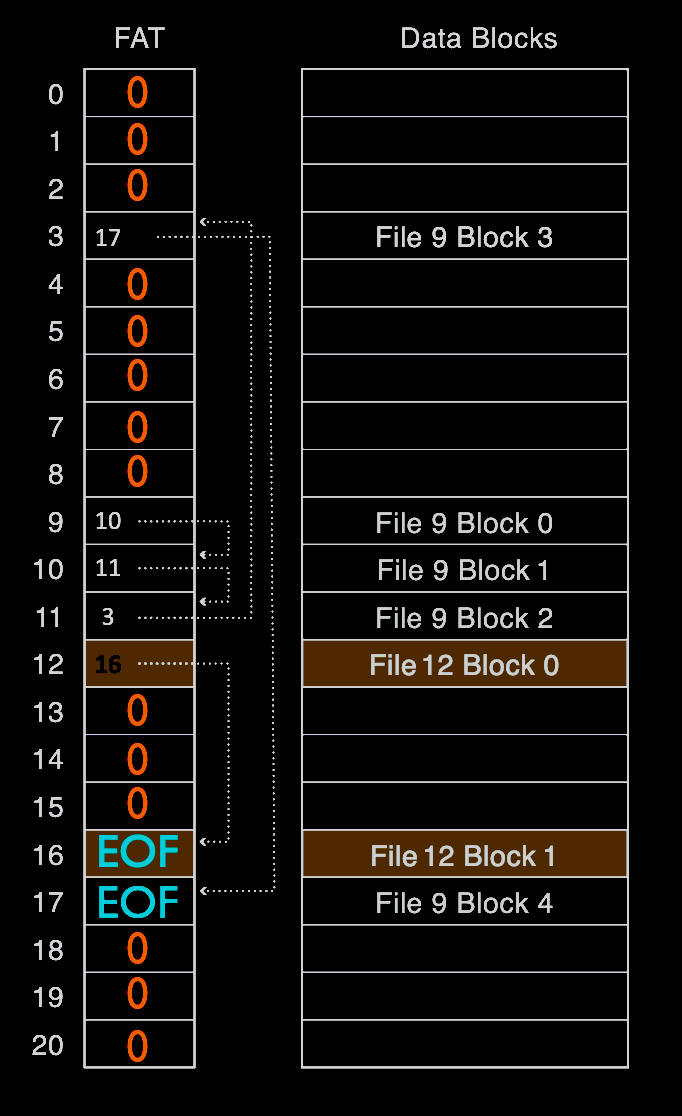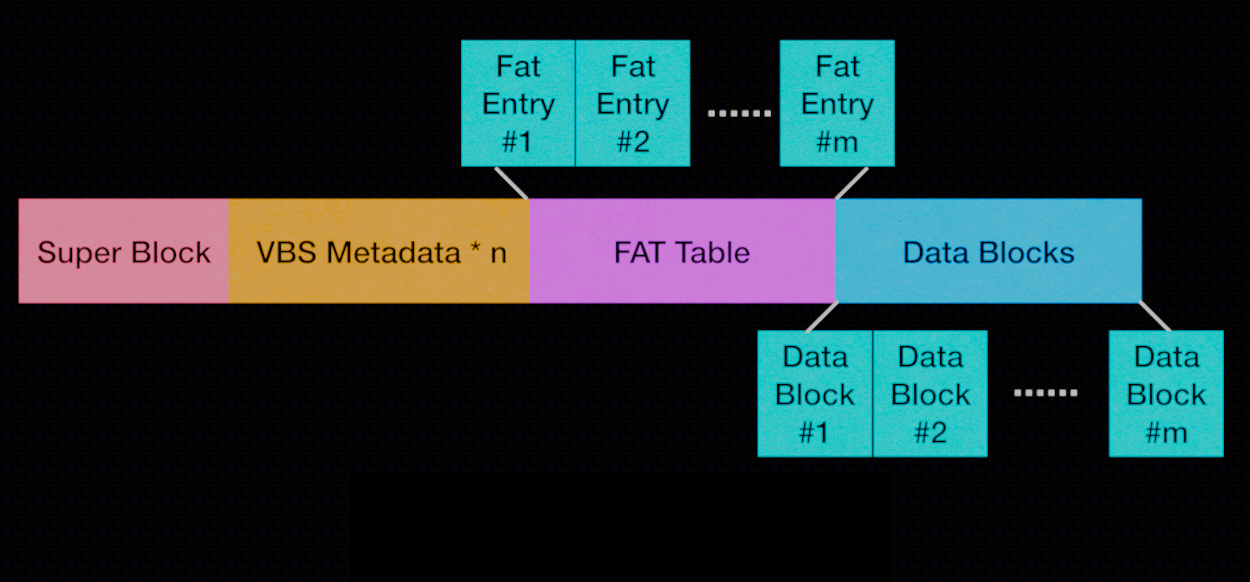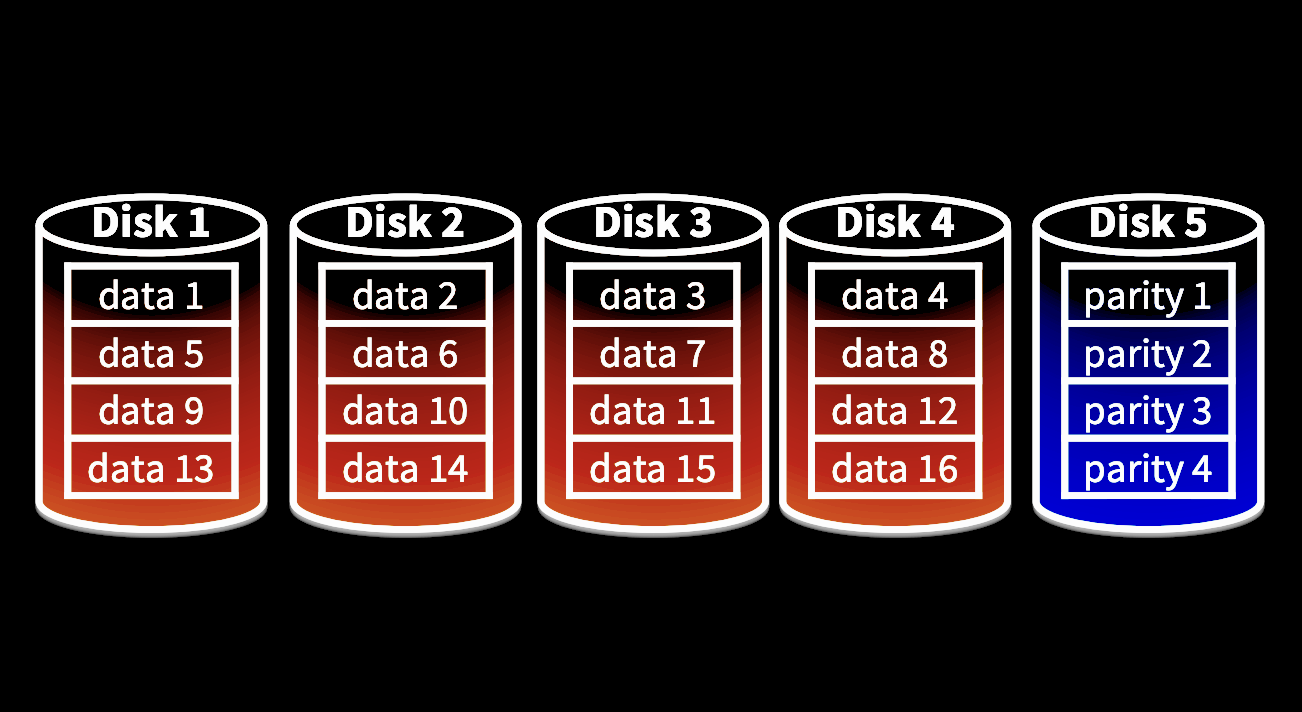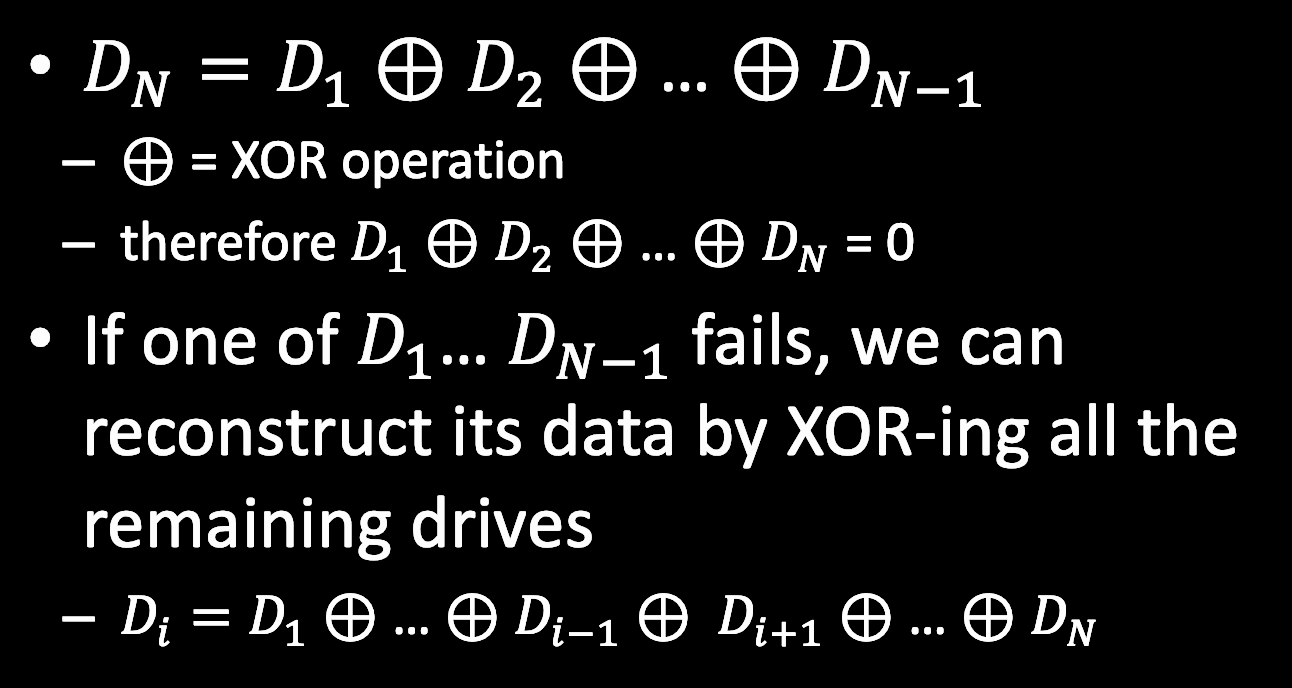File System: File Allocation Table (FAT)
I implemented a virtual block store (VBS), practicing one-to-many virtualization by giving the illusion that there are multiple virtual disks for the OS/user applications to use with just one physical disk. I developed the read and write operations that modify the blocks in memory. A file system manages a disk by partitioning its blocks. The first block is the superblock which stores metadata for the file system such as the free list. The next blocks contain the inode table which stores the metadata for each VBS operation. It is followed by the FAT table with FAT entries corresponding to the number of data blocks. The freelist in the superblock maintains a linked list of free FAT entries. Each VBS is organized as a linked list of FAT entries where each FAT entry points to the next entry. Finally, the data blocks store the actual data of each VBS. Shown below, is the partitioning of the physical disk. On the right is the File Allocation Table corresponding to the data blocks.




